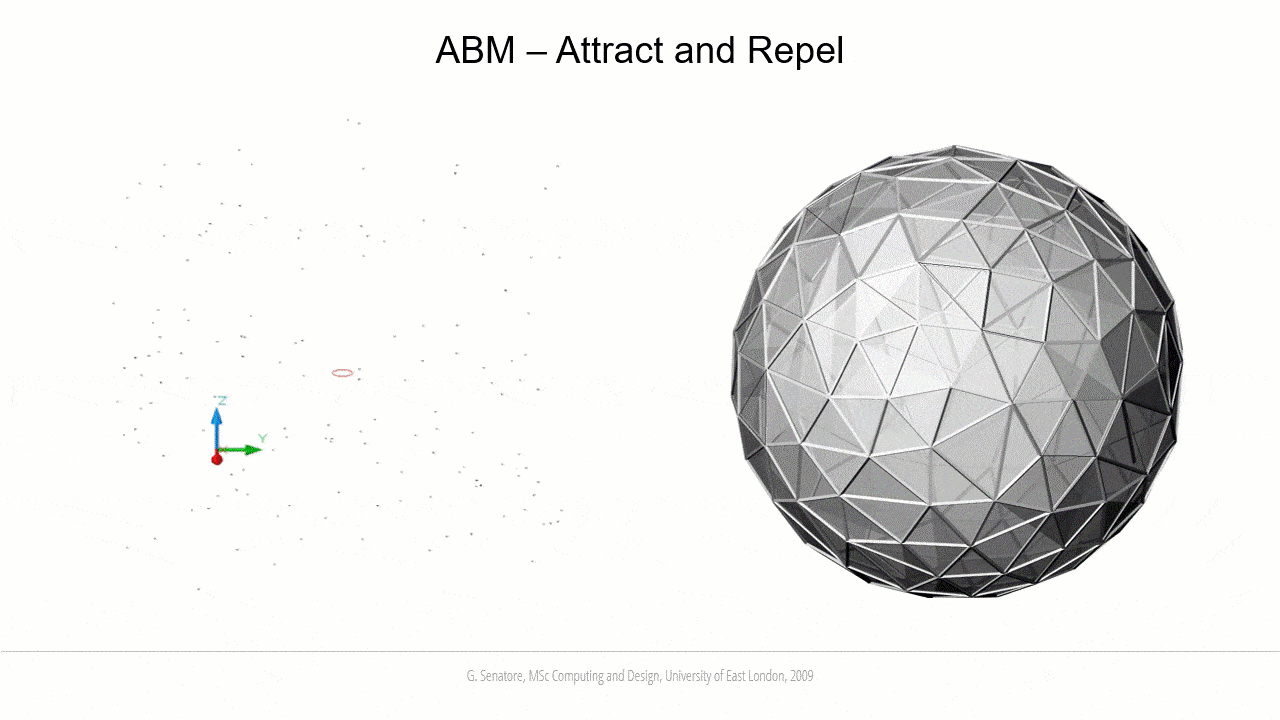Agent-Based Modelling
This research investigates the application of Agent-based Modeling (ABM) to the conceptual design of structural configurations.
Agents can be thought of as basic computational units whose behavior is based on a set of rules which depend on the interaction with the environment and other agents. ABM allows testing how the action of an individual affects the system as a whole. Although based on simple rules, ABM is able to model complex adaptive systems whose behavior is emergent from the interaction of multiple agents. ABM has been employed to search for insights into the complex behavior of natural systems, social science, economics, networks, etc. In architecture and civil engineering, ABM has been applied to model crowd dynamics in order to aid the design of circulation and evacuation routes.
This work focuses on agents whose behavior is governed by simple rules of attraction and repulsion. The agents are represented by nodes in 2D or 3D dimensions. Some agents are “attractors” and stay in a fixed position while other agents repel each other to maintain a certain “personal space” within which no other agent is allowed. The agents search for their closest attractor and slowly move towards it. Once in the proximity of the attractor, the agents are kept within a certain spatial region defined by the target distance to the attractor. The agent behavior switches from being attracted to being repelled depending on the direction of movement and distance from the attractor. Simultaneously, the agents evaluate the position of their neighbors. If the distance to an agent’s closest neighbor is smaller than that required for its “personal space”, the agent moves away from it. By tuning these simple rules many interesting outcomes are observed such as the formation of circles, spheres as well as more complex geometric configurations that are achieved by using multi attractors. In such configurations, the system reaches a low energy state in which is in equilibrium.
Acknowledgments
Gennaro Senatore carried out this research for his Master of Science in “Computing and Design” at the University of East London.
Team
Research Lead:
Gennaro Senatore
Advisors:
Paul Coates, Christian Derix | University of East London




